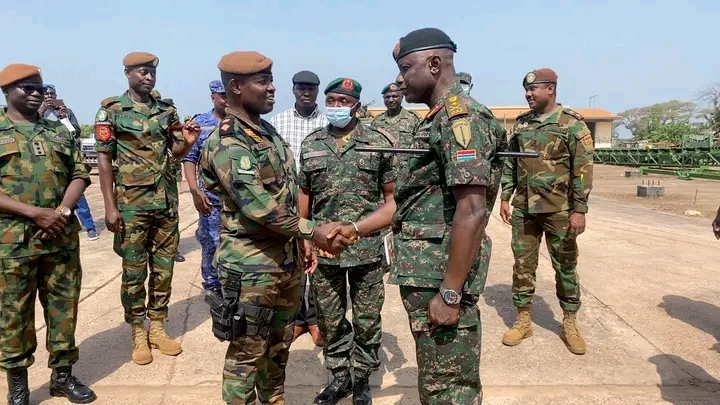
About two weeks ago, someone called me and said there were rumours of a failed attempt to stage a coup d’etat in The Gambia.
I thought it was the craziest thing I ever heard, and would have brushed it aside as an April Fool’s joke had we not been too far into the year.
A few days later, came reports later backed by a December 21 statement from the Government of The Gambia Spokesman and Presidential Adviser, that a coup attempt had been thwarted, and some suspects were detained. Everyone went about their business because that seemed the end of the matter.
But it wasn’t to be because the Government Spokesman issued an update the same day, providing more information about the alleged coup plotters, and efforts to arrest their co-conspirators who were on the run.
The alleged coup attempt was quickly and roundly condemned by the National Human Rights Commission, ECOWAS, and civil society organizations, with some of them calling on the government to ensure that those arrested are accorded due process.
Perhaps in response to these calls, the government announced on December 27 that a 11-member “investigative panel” had been formed to investigate and report on the coup attempt.
Once again, Gambians are engaged in lively discussions about yet another alleged coup attempt in the country. For a country that is the smallest on the African continent, and one of the poorest in the world, The Gambia has had more than its fair share of upheavals from coups, failed or not. And this is sad because it need not be.
The Gambia Armed Forces (GAF) has a long and at times glorious history dating back 121 years when the Gambia Regiment, a British Army colonial regiment, was established in 1901.
The Gambia Regiment which became known as the Gambia Company saw action in both World War I and World War II, and was replaced in 1958 by the Gambia Field Force, a paramilitary unit of the police, with about 140 men at The Gambia’s Independence from Britain in 1965.
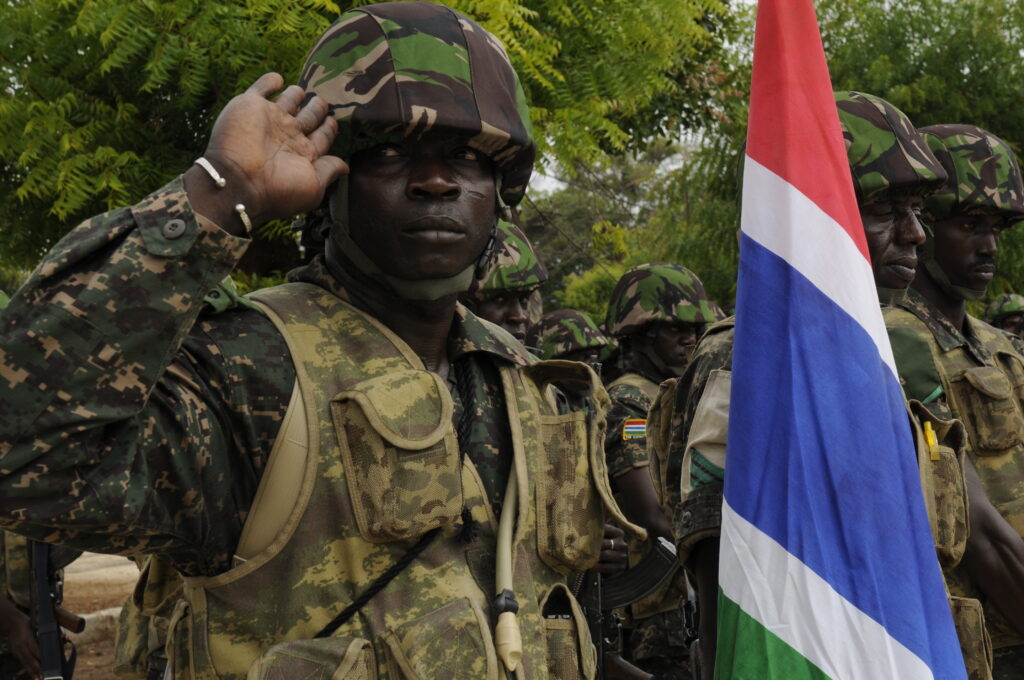
Following an abortive coup attempt in The Gambia in 1981 which was put down by Senegalese troops, the Senegambia Confederation was established in February, 1982.
Although The Gambia was to contribute troops to the Confederal Army and a Confederal Gendarmerie, this was not possible until 1985, following the creation of the Ministry of Defence in 1982, and the passing of the Gambia Armed Forces Act in 1985, thus creating the the Gambia National Army (GNA) , the Gambia Navy (GN), the Gambia National Gendarmerie (GNG), and the Air Force.
On July 22, 1994, soldiers led by Lieutenant Yahya Jammeh staged a bloodless coup against the government of President Sir Dawda Kairaba Jawara, thus ending what at that time was Africa’s longest surviving democracy.
Typically, the coupists said “rampant corruption and the retrogressive nature of the country,” was their reason for overthrowing the government.
The Jawara government was replaced by the Armed Forces Provisional Ruling Council (AFPRC) Chaired by Lt. Jammeh.
Although the AFPRC promised Gambians that they had staged a “coup with a difference”, they went on to rule with an iron fist, issuing 90 Decrees in two years and three months.
Among the most notorious of these Decrees, were Decree No. 1 which abrogated the 1970 Constitution of The Gambia, Decree No. 3 which allowed for the indefinite detention of people, and prohibited the exercise of Habeas Corpus rights, and Decree No. 45 of 1995 which created the notorious National Intelligence Agency (NIA).
In August 1996, a new Constitution was overwhelmingly approved by Gambian voters, paving the way for the return of the country to civilian rule.
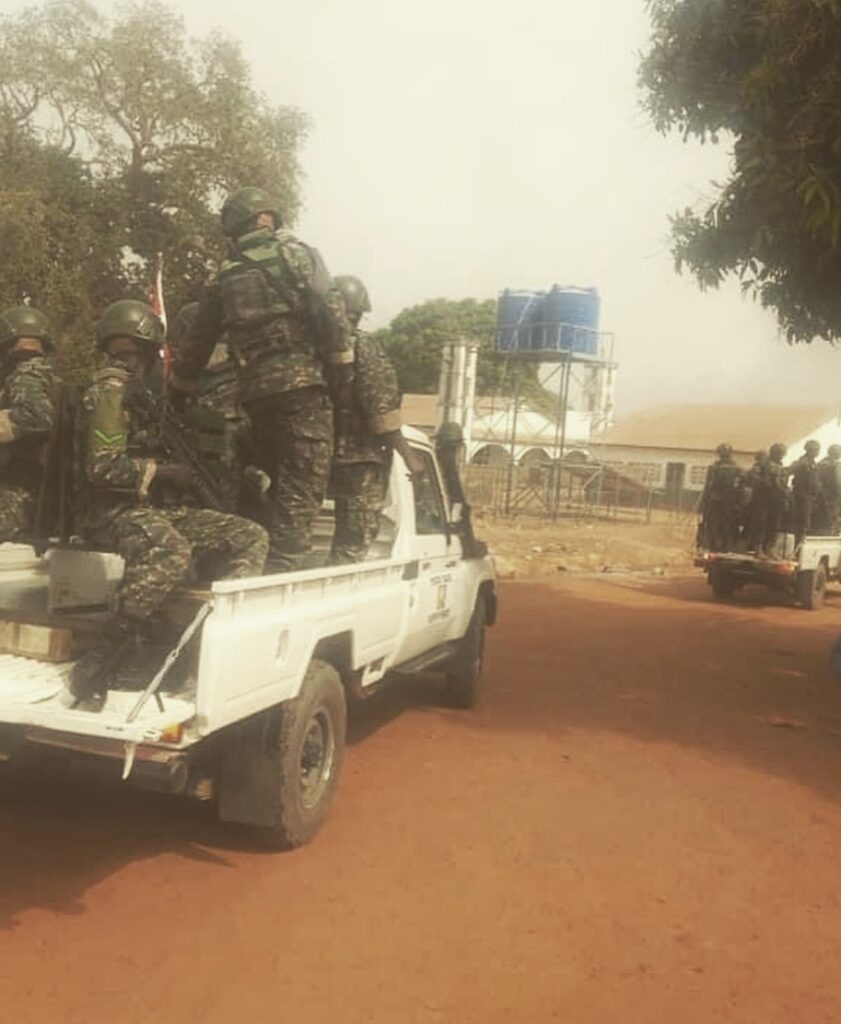
Jammeh resigned from the Army to contest the September 1996 presidential elections, under the banner of the Alliance for Patriotic Reorientation and Construction, (APRC), the political party he founded.
Jammeh won the elections, in which the main political parties during Jawara’s rule were banned by Decree 89 from participating.
Jammeh was inaugurated as President of The Gambia in January 1997, under the provisions of the new 1997 Constitution which recognized all AFPRC laws and Decrees.
Jammeh proceeded for the next 20 years to ruthlessly repress dissent, clamp down on the independent media, loot public funds, and kill some critics of his government, as well as innocent people.
The Gambian population thus lived in what Human Rights Watch called a State of Fear, in which justice and accountability was beyond the reach of Jammeh’s victims.
Jammeh’s rule finally ended in 2017, following his defeat at the hands of a coalition of opposition groups led by Adama Barrow in the December 2016 presidential elections.
The Barrow government, with international support, established the Truth, Reconciliation, and Reparations Commission (TRRC), to investigate former President Jammeh’s abuses of human rights.
According to the TRRC report, Jammeh was criminally responsible for the unlawful deaths of about 85 people between 2000 and 2016.
Most of these killings were carried out by the Patrol Team, or Junglers, which Jammeh created in 2004, as part of the Republican National Guard (RNG), and ostensibly for counterterrorism and VIP protection.
Jammeh turned the Junglers into a killing machine, just as he used the NIA as his “personal torture chamber” to neutralise public servants, his political opponents, and security services personnel accused of plotting against him.
Jammeh also directly interfered with the work of justice sector institutions, namely, the Attorney General Chambers and Ministry of Justice, the Prisons services, the NIA and the Gambia Police Force (GPF).
In addition, Jammeh stole over $975 million of public funds during the 22 years of his dictatorial rule; this, in one of the poorest countries in the world with a gross domestic product (GDP) of just over $2 billion in 2021.
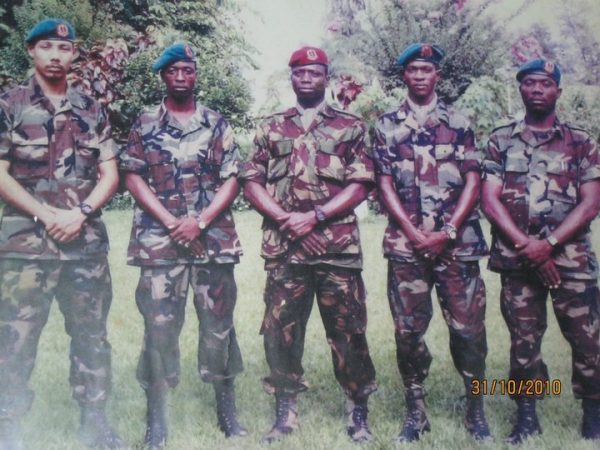
In May 2015, the UN Special Rapporteur on extrajudicial, summary or arbitrary executions reported that a “repressive State apparatus in the hands of the security forces appears to reign in the Gambia.”
That repressive rule was perpetrated by Jammeh with the help of the Gambian military (especially the Junglers) and the NIA, which created a fear in many Gambians.
The military and the NIA were also supported by the compromised Ministry of Justice, and the Judiciary which were packed with foreigners who were so-called Mercenary Judges and public prosecutors, who served Jammeh’s purposes.
The same military used by Jammeh to repress and instill fear in Gambians has been and still is a huge burden on public resources of The Gambia.
For example, The Gambia’s military expenditure increased from an average of 2.6 percent of total government spending between 2000 and 2004, to an average of 5 percent between 2012 and 2015.
Similarly, government spending on the military increased from an average of $2 million (in 2017 values) per annum between 1985 and 1995, to $3.9 million between 1996 and 2009, and $13.2 million between 2012 and 2015.
Almost seven years after President Jammeh was forced by the ECOMIG forces to relinquish power, the Gambian military continues to be a burden on the country.
Thus, the Ministry of Defence, whose budget caters to the GAF was allocated D817,699 million or 4 percent Gambia government expenditure in 2021.
In contrast, the Ministry of Agriculture accounted for 1.6 percent of government expenditure in 2021, even though agriculture is the source of livelihood for 80 percent of the rural population, and accounts for 17 percent of the GDP of the country.
This huge outlay of meagre resources on the Gambian military is not justifiable. Although the 1997 Constitution of The Gambia provides that the GAF should preserve national security and defend the sovereignty and territorial integrity of the country, border-related disputes between The Gambia and Senegal have been settled diplomatically, as in the 1976 Treaty on the Delineation of Land Boundaries.
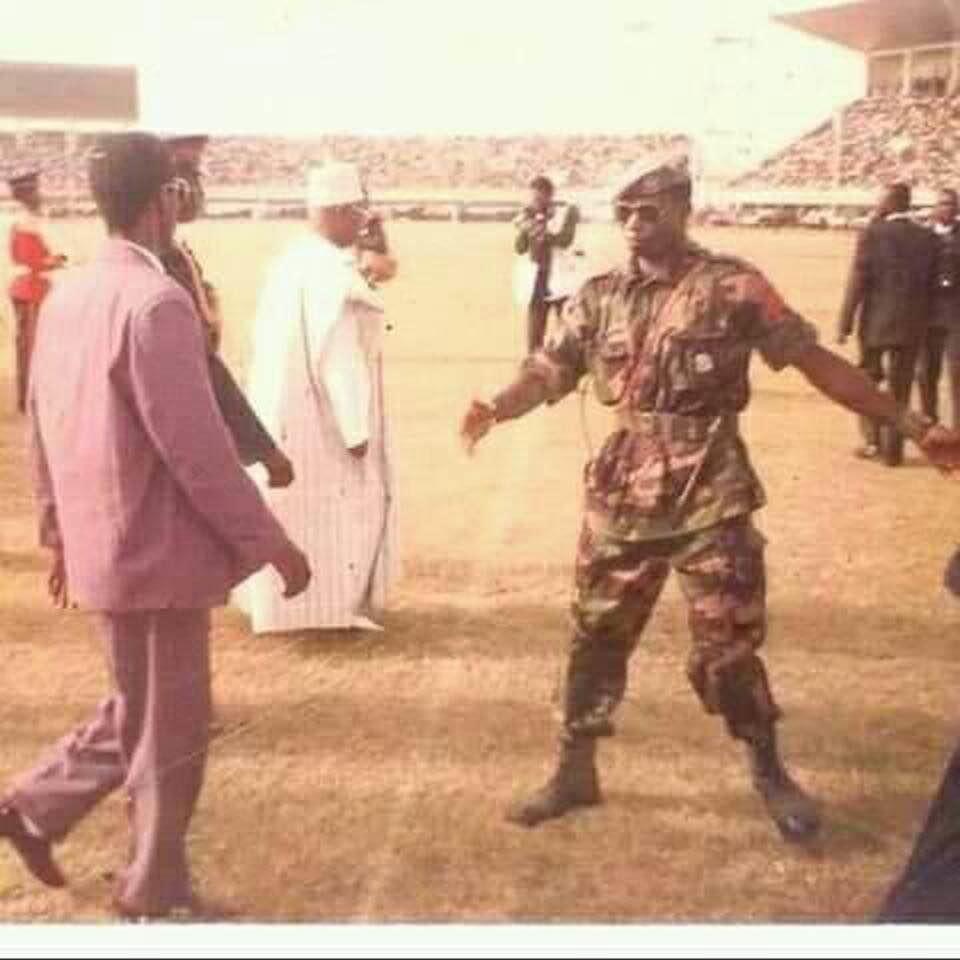
Time and time again, the Gambian military has been totally irrelevant to the defence of the Gambia’s border with Senegal, the only country it has a land border with.
Besides, Senegal’s military is vastly superior to The Gambia’s, with almost 19,000 active personnel in 2013, compared to about 2,500 active personnel for The Gambia.
In addition, Senegal spent $804 million (in 2017 value) on its military between 2012 and 2015, 15 times more than the $53 million spent by The Gambia over the same period.
Similarly, Senegal spent $347 million, or 30 times more than the $11.5 million spent by The Gambia on its military in 2018. The Gambian military can never be a deterrent to Senegal if it ever wanted to attack The Gambia.
Instead of providing security to Gambians, the Gambian military was used by former President Jammeh to terrorise Gambians, and the risk of their coups and coup attempts pose a threat to peace in the country.
According to the 1946-2018 global database of coups, The Gambia has between 1994 and 2016 had 1 successful coup and 6 unsuccessful or alleged coup attempts, along with the instability and disruptions they bring to the national development agenda.
Since the advent of the Barrow administration in 2017, The Gambia has had two coup attempts, including the one that was foiled last week.
With calls to withdraw ECOMIG forces from The Gambia, it is only a matter of time before the Gambian military takes another shot at taking power in the country.
Furthermore, the fact that military leaders in Guinea, Mali, and Burkina Faso are still in power despite the sanctions and international condemnations can only encourage GAF elements who might still harbor intentions of taking over power in the country, when and if the opportunity arises.
As I have argued earlier, The Gambia should like about 20 other countries in the world which have no standing army, demilitarise, and disband the GNA, along with the State Intelligence Services (SIS), formerly called the NIA.
Examples of countries which have disbanded their military include Cape Verde, Mauritius, and Costa Rica.
Cape Verde which shares a maritime border with The Gambia and is almost 1,000 Km away, transformed its Army in 2007 into the National Guard.
In addition, Cape Verde formed Coast Guard, to defend and protect its exclusive economic zone (EEZ) of 800,561 sq. Km which is 76 times the Gambia’s relatively tiny EEZ of 10,500 sq. Km.
Cape Verde’s military spending has been consistently less than that of The Gambia, totaling $34.2 million (in 2017 values) between 2012 and 2015, compared to $52.7 million for The Gambia for the same period.
Similarly, Mauritius, an island nation of the coast of Africa in the Indian Ocean, does not have a standing army. Instead, all military and security functions in the country are handled by a 12,500-strong Mauritius Police Forcecommanded by the Commissioner of Police.
The MPF consists of various Divisions and Branches for domestic law enforcement, as well as paramilitary functions conducted by the Special Mobile Force, and the National Coast Guard.
Cost Rica which has no military, and Mauritius whose military expenditure for the past 30 years has been a paltry average of 0.2 percent of its GDP were both ranked High Human Development countries in 2017.
In contrast, The Gambia, whose military expenditure increased from 0.3 percent of its GDP in 1994 to an average of 1.4 percent of GDP between 2012 and 2015, had a Human Development Index ranked 174 out of 189 countries in 2017, thus placing it in the group of Low Human Development countries.
Costa Rica and Mauritius had an average adult literacy rate of 97.4 percent, and 92.7 percent, respectively (compared to 42 percent for The Gambia), between 2006 and 2016.
The Gambia, with a per capita Gross National Income (GNI) of $1,516 (in 2011 purchasing power parity dollar terms) is also much poorer than Cape Verde (with a per capita GNI of $5,983), as well as Costa Rica and Mauritius, which had per capita GNIs $14,636 and $20,189, respectively.
Furthermore, life expectancy in Costa Rica and Mauritius was 80 years and 74.9 years, respectively, in 2017 compared to 61.4 years in The Gambia.
Thus, the price Gambians pay for a higher military expenditure is that they are poorer, less educated, and their lives are on average, 18.6 years and 13.5 years shorter than those of Costa Ricans and Mauritians, respectively.
Although The Gambia launched a Security Sector Reform (SSR) process in 2017, it is now almost dead. In addition, the National Security Policy (NSP) launched in 2019 as part of the SSR, is completely mute about whether The Gambia should demilitarize.
Instead, the NSP calls for “right sizing” the military, making it more professional, and bringing it under greater command of civilians.
The Gambia should learn from Mauritius, Cape Verde and other countries, and demilitarise.
The aim should be to turn The Gambia into a pacifist country, through a well-planned, implemented, and compassionate program that will demobilize, re-train, and re-integrate Gambian soldiers into a dynamic civilian economy.
The demilitarisation programme should also restructure and build the Gambia Police Force (GPF) into a more professional and better equipped force than it is today to provide the internal security The Gambia needs.
In the same vein, the Gambia Navy can be transformed into a well-resourced and professional para-military force similar to the National Coast Guard of Mauritius, and the Coast Guard of Cape Verde, to protect the country’s marine resources.
The international community can and should help The Gambia demilitarise. First, ECOWAS, with support from the AU, and the United Nations, can negotiate an agreement with The Gambia to provide it military protection, similar to that accorded by the OAS to Costa Rica under the auspices of the Inter-American Treaty of Reciprocal Assistance.
In the same vein, development partners should change the focus of the SSR support they provide The Gambia to its demilitarisation, internal security, and the protection of its marine resources.
A demilitarised Gambia can also inspire other African countries such as Lesotho (which has had 11 coup attempts between 1970 and 2014), Eswatini, as well as São Tomé and Príncipe (three coup attempts between 1995 and 2022) to demilitarise, and increase peace and stability in West Africa, and Africa at large.
Finally, demilitaring The Gambia will transform a country presently called the Smiling Coast of Africa, into the Smiling AND Peaceful Coast of Africa, and one which spends its resources wisely, and not on a military that is not needed, and threatens, rather than provides, national security.
By Katim Serigne Touray PhD
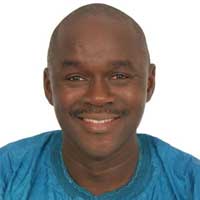





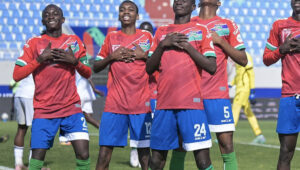
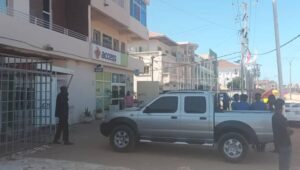



Recent Comments